Why do younger Chinese consumers have a supreme fondness for ‘guochao’ products?
Even after the conclusion of the Beijing 2022 Winter Olympic and Paralympic Games, the Games’ mascots, Bing Dwen Dwen and Shuey Rhon Rhon, are still selling like hot cakes among young Chinese consumers. On March 21, advanced sales opened for the mascots on an official Olympic flagship store, with many consumers realizing that the mascots were still hard to get their hands on.
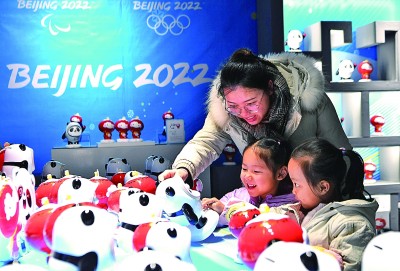
Tourists buy porcelain products inspired by Bing Dwen Dwen and Shuey Rhon Rhon, mascots for the Beijing 2022 Winter Olympic and Paralympic Games, at a porcelain factory in Dehua county, Quanzhou city, southeast China’s Fujian Province, Jan.19, 2022. (Photo/Xinhua)
“I can’t get one online, and I’ve waited for more than one hour before finally buying a Bing Dwen Dwen toy,” said Hu Rui, who was born in 1995. Hu is a fan of domestic brands and products, or “guochao” products. “Guochao” is a concept involving emerging domestic brands and designs inspired by Chinese culture.
“The reason why Bing Dwen Dwen has become a sensation is because it is a true reflection of the Chinese style,” said Wang Xin, deputy dean of the Advertising School at the Communication University of China.
According to a report on the development of domestic consumer brands in 2020 released by AliResearch, a research initiative under Alibaba, domestic brands have already captured an online market share of 72 percent. According to statistics from Baidu, Chinese consumers increased their attention towards domestic brands over the past 10 years by 528 percent.
Elements of traditional culture, which in the past could seldom hardly be associated with modern fashion trends, nowadays can be seen in various shopping scenarios, after they were increasingly adopted for incorporation into the development of various creative and cultural products, including cosmetics products inspired by the traditional craft of relief sculptures, sports shoes printed with patterns featuring cultural elements from Dunhuang’s Mogao Grottoes, and perfumes developed by White Rabbit, a domestic candy manufacturer, to name just a few.
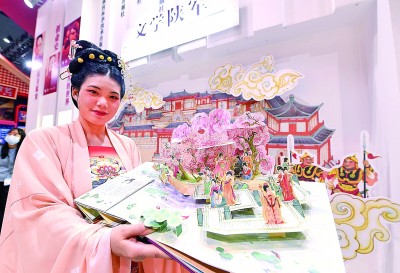
A staff member showcases a three-dimensional book about Chang’an, a city known in contemporary times as Xi’an, at the 17th China (Shenzhen) International Cultural Industries Fair (ICIF) in Shenzhen, south China’s Guangdong Province. (Photo/Xinhua)
“Li-Ning’s hooded sweatshirts with the traditional form of the Chinese characters for ‘China’ and ‘Li-Ning’ printed on them are so cool,” said Hu, a fan of the sportswear sold by Li-Ning, a Chinese sportswear and sports equipment company.
“The Chinese characters printed on the sportswear of Li-Ning convey a sense of national identity and cultural identity, and are easily recognizable,” said Wang.
Wang pointed out that younger consumers have a unique identity that distinguishes them from those of other older age groups. They like to try new things but lack the patience to acquire an in-depth understanding of anything new, Wang pointed out.
“This is related to the way we acquire information in today’s society, that is to say, if we find a short video that’s uninteresting, we won’t finish it,” Wang explained. “In the case of building a successful brand, it’s vital that the inner beauty of the brand can be explicitly expressed through its appearance. This explains why those easily recognizable domestic products are more likely to gain popularity among consumers,” Wang explained.
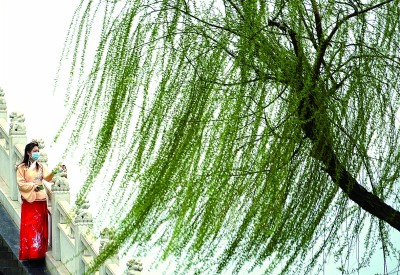
A tourist goes sightseeing at a scenic spot in Kaifeng city, central China’s Henan Province. (Photo/Xinhua)
Liu Liming, an associate researcher with the School of Communication and Design at the Guangzhou-based Sun Yat-sen University, said “guochao” also represents a value and a lifestyle among younger consumers, and the rise of “guochao” provides an opportunity to popularize the values of traditional culture and Chinese-style aesthetics.
“The market for ‘guochao’ is one closely related to culture, but essentially, it is a market, where market rules have to be respected. This means in addition to looking good, the products must be of a high quality,” said Liu.
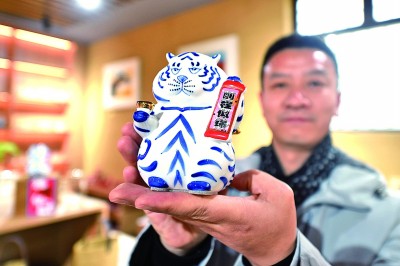
A man showcases a cultural and creative product at a display center in Xibaipo township, Pingshan county, north China’s Hebei Province. (Photo/Xinhua)
“As a cultural trend, ‘guochao’ has a more thorough-going and long-lasting influence, and it will continue to have an impact on young people’s aesthetic tastes and consumption behaviors, which will then consequently affect Chinese companies when they seek to establish a product development strategy. Consumers, enterprises and ‘guochao’ brands affect each other and make each other better,” Liu explained.
“The rise of ‘guochao’ provides an opportunity for industrial upgrading,” said Wang. “In the past, domestic products were mainly products made in China, and they merely satisfied people’s material needs and solved problems such as what people could use,” Wang said, adding that “guochao” not only satisfies people’s material needs, but also their spiritual needs as well.
Photos
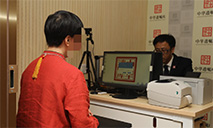 Increasingly more young adults in China register wills that include virtual assets
Increasingly more young adults in China register wills that include virtual assets Rapeseed flowers turn NW China's Luoping into picturesque spring wonderland
Rapeseed flowers turn NW China's Luoping into picturesque spring wonderland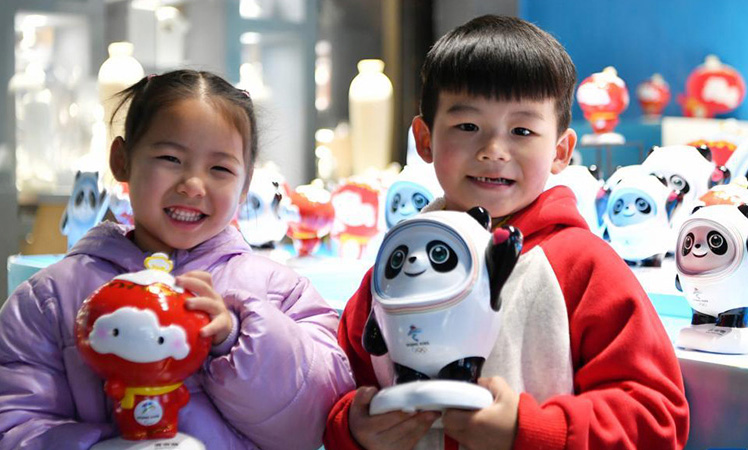 Why do people in China fall for animated characters like LinaBell and Bing Dwen Dwen?
Why do people in China fall for animated characters like LinaBell and Bing Dwen Dwen? Photo Album: architecture in Beijing merging history and modernity
Photo Album: architecture in Beijing merging history and modernity
Related Stories
Copyright © 2022 People's Daily Online. All Rights Reserved.






